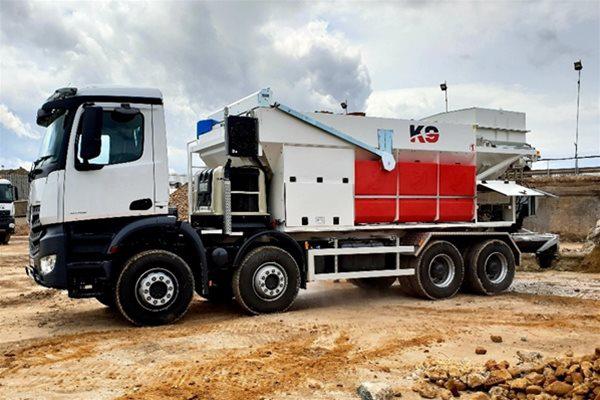The Rising Use of Recycled Concrete Aggregates

Back in March, following the UK Concrete Show, we wrote about our success at the exhibition, including some of the sales we had made. One of these sales in particular was for our new Kimera K960 mobile batching plant, ordered by E.D & M.A Redpath & Sons in Northumberland. The K960 was part of their new venture into recycling concrete for use as an aggregate in their projects. In light of this, we’ve decided to explore more of this area of the construction industry, and shine a light on using recycled aggregates to produce ready mixed concrete.
Modern concrete structures and buildings will often find the end of their life is brought on by being no longer needed or used, rather than the concrete failing from age. Due to the flexibility of concrete and the adaptability it provides, structures that become redundant or out-dated in terms of functionality can be stripped back to their cores and built afresh. Through the demolishing of these buildings, the construction industry is provided with a potentially rich source of recyclable material for concrete production.
When concrete is recycled, it is crushed down to aggregate size (typically around 20mm) and incorporated into a new mix of concrete. These concrete pieces fall into a specific set of recycled materials called recycled concrete aggregates, defined by a masonry content of no more than 5%.
This recycled concrete, particularly the coarser portions, can be used as an aggregate in new concrete to reduce the need for virgin materials to be used, further reducing the impact the construction industry has on the environment. This will also reduce the waste produced by the construction industry, again providing environmental and ecological benefits.
When using recycled concrete aggregates, there are still factors that must be taken into consideration. For example, it must be remembered that recycled concrete aggregates will have a higher rate of absorption and lower specific gravity. Both of these factors will go on to produce concrete with a slightly higher drying shrinkage and creep than concrete produced with virgin aggregates.
The chloride content is also in need of consideration, especially if the recycled concrete aggregate will be used for reinforced concrete. As the alkali level and the aggregate type in the system are probably unknown, there is a risk of an alkali-silica reaction if mixed with unsuitable materials.
We hope this has provided an insightful exploration into the world of recycling concrete for use as an aggregate, and we look forward to keeping up with E.D & M.A Redpath & Sons as they embark on this new journey in their business.
Get in touch today by calling +44 (0) 1280 820 770, emailing [email protected], or sending a query via our online enquiry form.